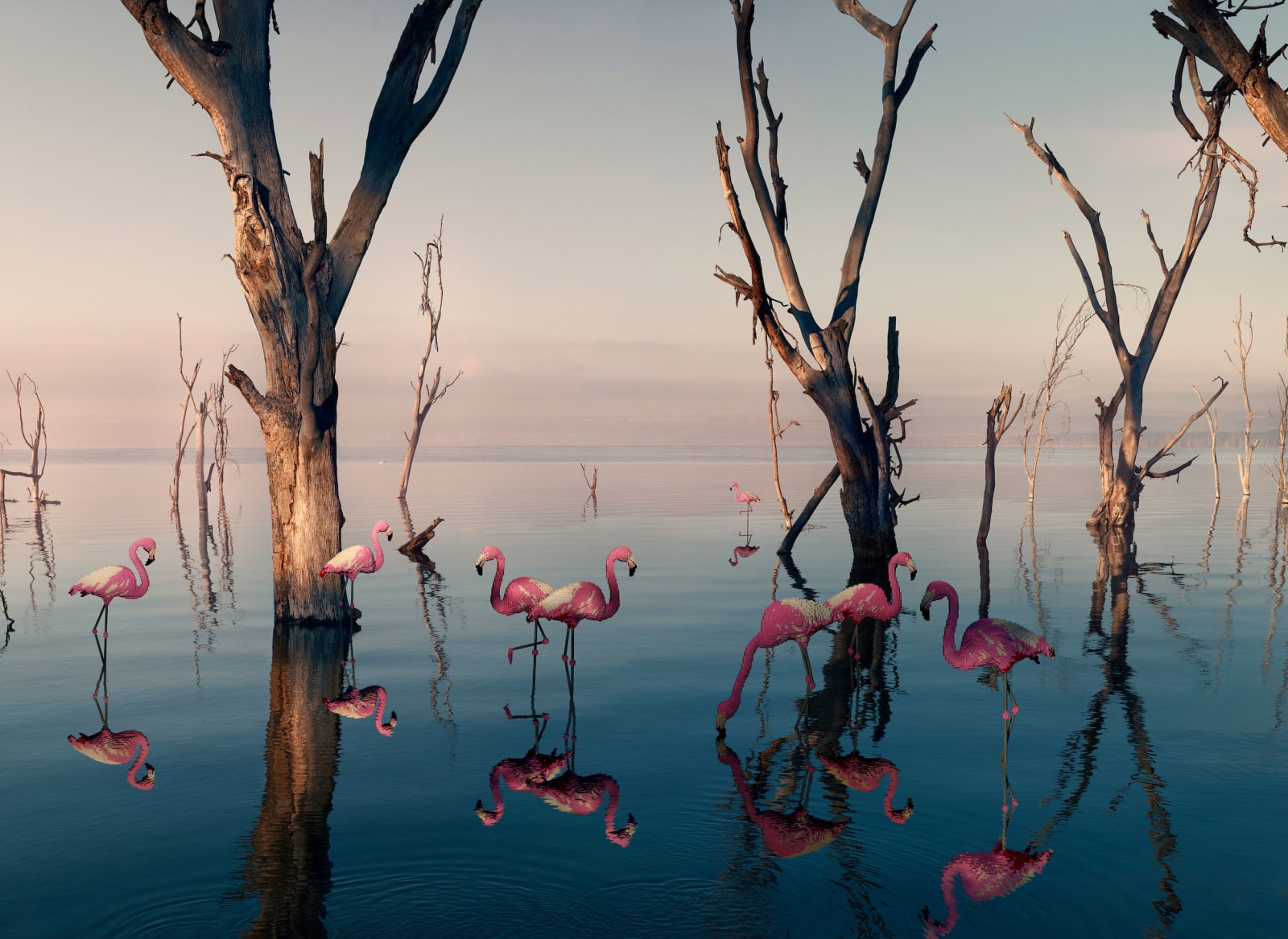Dean West & Nathan Sawaya
Chilean Flamingo, 2019
Series: Perniciem
archival pigment print
96.5 x 132.3 cm
38 x 52 1/8 in
38 x 52 1/8 in
Edition of 9
121.9 x 167.1 cm
48 x 65 3/4 in
48 x 65 3/4 in
Edition of 6
147.3 x 202.2 cm
58 x 79 5/8 in
58 x 79 5/8 in
Edition of 1
Further images
The Chilean Flamingo has been straddling the fine line of vulnerability, a victim of global indifference and haphazard conservation efforts due to lack of sufficient data, since it first appeared...
The Chilean Flamingo has been straddling the fine line of vulnerability, a victim of global indifference and haphazard conservation efforts due to lack of sufficient data, since it first appeared on the IUCN’s Red List of Threatened Species a decade and a half ago, in 2004. Historically, we have over and over again failed in making real attempts at protecting threatened species until their predicaments have become dire and they reached the point of critical endangerment and extinction.
Recognized by their pale pink plumage, hot pink joints and large black beaks, these iconic birds usually nest in grand flocks of tens of thousands. In an attempt to adapt to habitat loss, however, these colonies have now been reduced to as low as just a few individuals and its efforts to recolonize have been deterred by a rampant and illegal egg collecting trade. Their numerous failed attempts to nest in Bolivia - at one point a sanctuary for the Chilean Flamingo - are due to both egg-hunting and tourism-related disturbances of them and their habitat.
Recognized by their pale pink plumage, hot pink joints and large black beaks, these iconic birds usually nest in grand flocks of tens of thousands. In an attempt to adapt to habitat loss, however, these colonies have now been reduced to as low as just a few individuals and its efforts to recolonize have been deterred by a rampant and illegal egg collecting trade. Their numerous failed attempts to nest in Bolivia - at one point a sanctuary for the Chilean Flamingo - are due to both egg-hunting and tourism-related disturbances of them and their habitat.
Join our mailing list
* denotes required fields
We will process the personal data you have supplied in accordance with our privacy policy (available on request). You can unsubscribe or change your preferences at any time by clicking the link in our emails.














